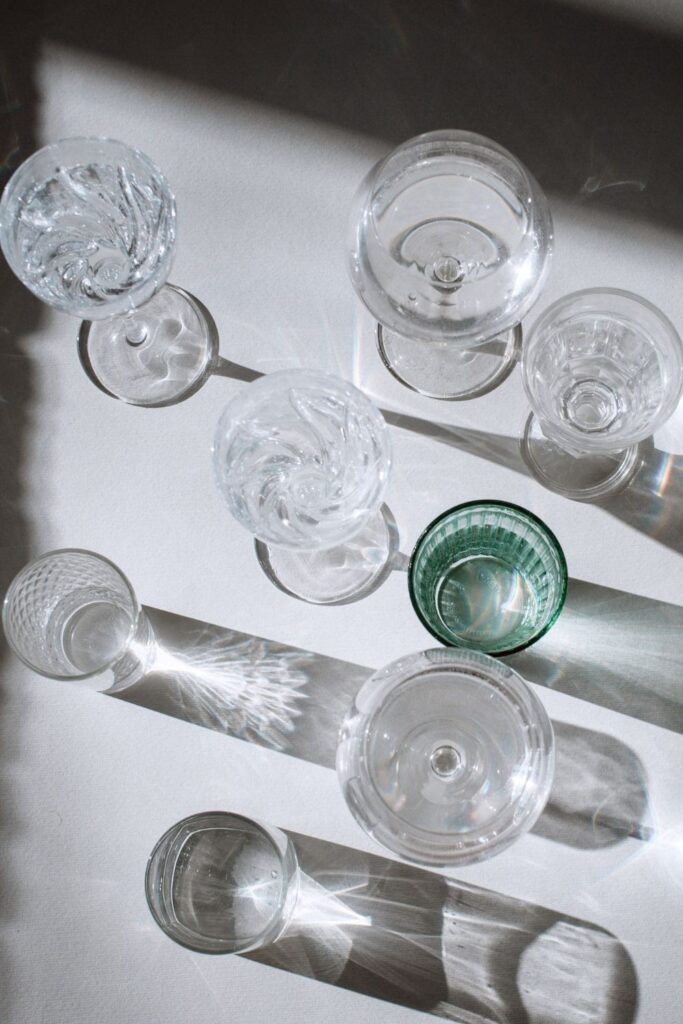
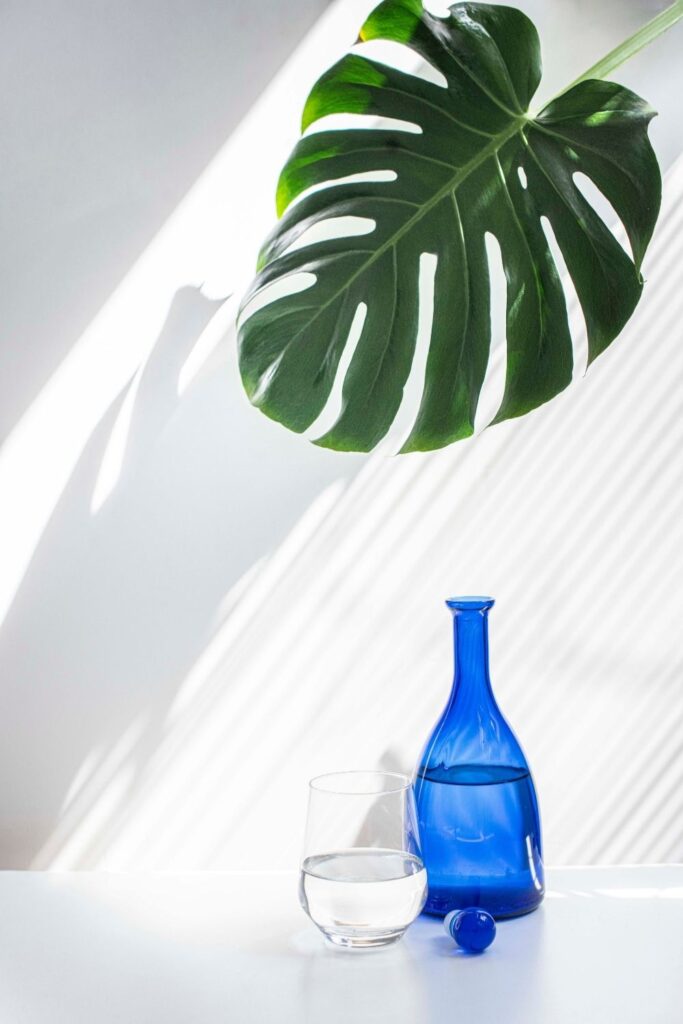
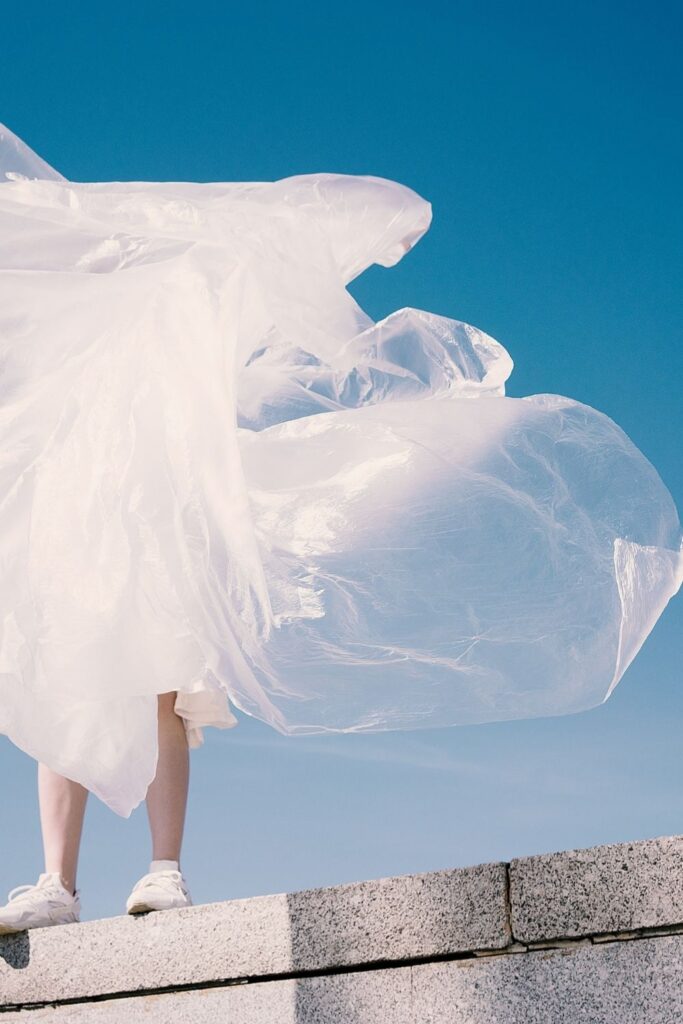
Glass vs Plastic: What is Safer and More Eco-Friendly?
In one corner, we have PLASTIC. In the other corner, we have GLASS!
Welcome to the glass vs plastic showdown.
These materials have become essential in any household, but which one is better for us? For other people? For our planet?
If you think the answer’s easy and there is one clear winner on the plastic vs glass debate, think again.
In fact, there’s a lot to unpack(age) here so we’ll sip, snap, zip, bottle, and button our way through each material, highlighting the good, the bad and the ugly.
QUICK LINKS FOR GLASS VS PLASTIC
Pros and Cons of Glass
Pros and Cons of Plastic
PROS & CONS OF GLASS
1. ENVIRONMENTAL CONSIDERATIONS OF GLASS

What is glass?
Before it becomes a transparent jar that looks great holding all your bulk goodies in the pantry, glass starts out as a few natural raw materials: silica (sand), soda ash, limestone, and/or dolomite, along with a small number of other minerals.
All materials abundantly available on Earth, right?
We’ve got an abundance of sandy beaches to turn into glass! Not so fast…
Only a specific type of sand can be transformed into glass, and it’s often sourced from seabeds and river beds, disrupting natural ecosystems and stealing microorganism habitats.
As the second most consumed natural resource, we’re quickly running out of sand.
Energy use and production impact
In its most environmentally-friendly manner, just sand, soda ash, and limestone are melted at high heat (around 1500°C) to form a liquid that, as it cools, will become glass in its various shapes and sizes.
In some cases (typically not for container glass), dolomite is used in addition to limestone in order to improve the viscosity of glass in its liquid form, which helps to make it more resistant (but can also release pollution).
Let’s back up a bit. 1500°C is HOT.
You can probably guess how heating anything to that high temperature is possible: fossil fuels. In the U.S. this mostly comes from natural gas, but elsewhere it might come from even more carbon-intensive sources, like petroleum or coal.
Glass demands higher heat than plastic, so a greater amount of natural resources are required, including non-renewable materials like sand and minerals. For every ton of finished container glass, roughly 1.17 – 1.19 tons of raw materials are required.
Additionally, glass manufacturing can release dangerous particles into the atmosphere and has been associated with acidification and smog formation.
Glass recycling impact
Here is where glass far outshines plastic (aside from literal appearance, anyway).
Glass is 100% recyclable. Better yet, it’s infinitely recyclable—meaning it can be transformed into a new product again and again without any loss in quality.
Recycling glass is thus an effective way to combat many of its environmental woes; It reduces emissions, saves precious natural materials, and saves energy. Every tonne of cullet (recycled glass) saves roughly 1.2 tonnes of raw materials from being sourced.
According to recyclenow, it also saves roughly 580kg CO2 throughout the supply chain and cuts water and air pollution by 50% and 20%, respectively.
Unfortunately, one of glass’ biggest environmental influences (the fossil fuels required for heat) is unavoidable. A high amount of energy is still needed to melt glass down in the recycling process.
Another slight drawback is the fact that about 16% of the emissions saved by processing recycled glass are offset by the additional recycling loop transportation requirements.
Given losses throughout the recycling supply chain, some virgin materials are still required. One study even suggests that recycled glass, therefore, requires only 13% less energy, compared to virgin glass.
According to Carbon Footprint though, the net carbon savings from recycling a tonne of glass is 315kg after taking into account processing and transport. When it comes to climate change, savings like this really matter.
Poor recycling rates
Here’s the real kicker: of the 12.3 million tons of glass generated in the U.S., just 31.3% are recycled (a rate that’s lower than previous years, BTW).
This is in part due to “wishcycling”, but also due to the fact that broken glass often can’t be sorted and recycled due to the liability it poses to the sorters.
Then it ends up in landfills, where it can take up to two million years to decompose.
Poor recycling rates make the environmental footprint of glass really heavy.
Weight and shipping concerns
Speaking of heavy… The weight of glass may be the reason why many people like it but it is actually another environmental downfall.
Yes, that bottle of kombucha might look and feel great, but getting it to your local grocery store automatically requires more transportation emissions than its plastic counterpart.
Additionally, glass is more prone to breakages, making it more expensive to ship and more likely to result in wasted product.
2. HEALTH CONSIDERATIONS OF GLASS

Health and safety concerns in glass manufacturing
While dolomite isn’t always used in glass manufacturing and is generally considered non-toxic, heavy inhalation of it is associated with a range of respiratory disorders.
Similarly, silicosis, one of the oldest occupational lung diseases, is also relatively common among glass factory workers.
More concerning is the exposure to heavy metals like lead, arsenic, chromium, antimony, and selenium dust/fumes. These have been linked to a range of conditions including, but not limited to, brain cancer, nasopharyngeal cancer, lung cancer, cancer of the larynx, and laryngeal cancer.
Ultimately though, there is only limited and somewhat inadequate evidence that occupational exposures in the manufacturing of glass containers are carcinogenic.
Health and safety concerns for consumers
While decorative, enameled drinking glasses have been suspected to contain harmful levels of lead and other heavy metals, the biggest risk for consumers is obvious: accidentally cutting ourselves.
PROS AND CONS OF PLASTIC
3. ENVIRONMENTAL CONSIDERATIONS OF PLASTIC
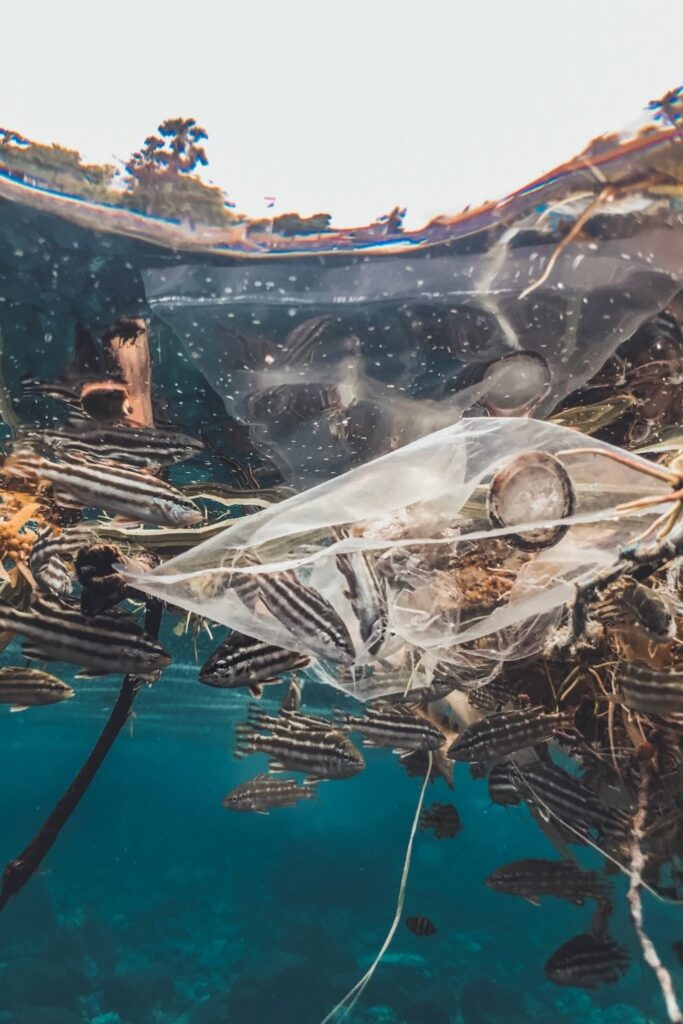
What is plastic?
Plastics are traditionally made from natural gas and petroleum.
More specifically, they’re made from monomers like ethylene, an essential ingredient for that Coca-Cola bottle, and also a byproduct of the environmentally destructive practice of fracking.
These monomers join as the building blocks, to come together in various polymers (structures of bonded units). In ethylene’s case, it becomes polyethylene, which can eventually become one of its derivatives, PET, HDPE, or LDPE, a few of the 7 types of plastic.
Energy use and production impact
These petroleum monomers, or ‘hydrocarbon feedstocks’ (fossil fuels), require roughly 8% of the world’s total oil production.
To extract and transport the materials alone produces roughly 13.5 million metric tons of CO2e (equivalent) every year (and this is just for plastic feedstocks in the U.S.).
To transform them into polymers then requires an energy-intensive process, making plastic, one of the “most energy-intensive materials to produce,” according to NPR.
Like glass, plastic requires heat, but it also requires refrigeration (to the tune of -260°F), both of which typically come from electricity.
Of all American industries, plastics account for 6% of the total energy used.
That’s what plastic production consumes. Let’s not forget what it produces.
For example, to refine ethylene, 213 million metric tons of CO2e was required in 2015 in the U.S. This is roughly the same amount as 45 million passenger vehicles driving for an entire year.
The environmental impacts continue.In the U.S., of all toxic air pollution, a huge chunk (14%) is from the plastics industry. These include VOCs, benzenes, toluenes, and nitrous oxides (a greenhouse gas with a warming potential 300 times as potent).
Recycling
A single ton of recycled plastic reduces 5,774 Kwh of energy, 16.3 barrels of oil, and 98 BTUs of energy.
Those energy savings are helpful but seem rather bleak when you consider that just 9% of all the plastic that’s ever been produced has been recycled.
What’s more, even when plastic is recycled, it’s actually ‘downcycled,’ or transformed into a product of lesser quality. Eventually, the cycle can no longer continue, so most plastics can only be recycled once or twice.
When it comes to glass bottles vs plastic bottles, glass is the clear winner in terms of recycling (if we actually do it).
Use and end of life
One of the big benefits of plastic is its weight. In fact, this is why plastic packaging has started to come out on top of the ‘glass vs plastic bottles’ battle.
Every step of the supply chain requires transportation and, with a weight roughly 40 times less than glass for comparable products, plastic saves on significant shipping emissions.
That fact may weigh in plastic’s favor on a small scale when you’re considering whether to get milk in glass bottles vs plastic, but…
When you consider we produce roughly 300 million tonnes of plastic waste annually, that weight decrease doesn’t really amount to much.
FYI, that’s the same weight as the entire human population.
Around 60% of it ends up in a landfill, incinerator, or polluting our environment, releasing harmful microplastics, as well as other toxins.
All in all, between production and the unfortunate fate of incineration, plastic could produce around 56 gigatons of carbon between 2020 and 2050, equivalent to fifty times the annual emissions of all American coal power plants—and that’s a low estimate.
4. HEALTH CONSIDERATIONS OF PLASTIC

Health and safety concerns in manufacturing
Throughout the entire plastic supply chain, from raw material manufacturing to processing, health concerns are present.
Just as toxic chemicals are released into the environment, they can also put workers in harm’s way, by releasing clouds of toxic vapors or causing chemical spills, fires, or explosions.
Plastic industry workers have been harmed by noise and respiratory particulates, leading to hearing issues and respiratory problems like lung disease. In some areas of the world, plastic factories have been associated with a 400% increased risk of breast cancer, thanks to toxic fumes.
Workers in plastic refining tend to bear the biggest burdens, with associated health complications including cancer, genetic impacts, reproductive and developmental problems, and nervous system impairment.
Health and safety concerns for consumers
Plastic products are toxic, containing a cocktail of chemicals like pesticides, polycyclic aromatic hydrocarbons (PAHs), polychlorinated biphenyls (PCBs), heavy metals, and the dreaded bisphenol A (BPA), to name just a few.
In the EPAs list of Priority Pollutants, 78% are found in plastic.
When heated, these chemicals can leach into food.
Some have been associated with metabolic disorders (like obesity) and problems with fertility. When it comes to food storage and the glass vs plastic Tupperware debate, plastic-free food storage options like glass are the clear winner.
Plastic can even have an indirect impact on human health, one that occurs long after we use that straw.
When decomposing in a landfill or incinerated, plastic can release toxic chemicals, impacting nearby communities and resulting in environmental justice issues.
Similarly, when plastic degrades in the natural environment, the microplastics can get into the soil, water, wildlife, and humans. If you’ve ever eaten seafood, you’ve certainly consumed microplastics.
Its ubiquitous nature means that in our modern age, babies are even born with pollutants and microplastics already in their system.
Even if you follow a vegan diet, microplastics can enter the human body via ingestion or inhalation simply by using a plastic bottle, meaning every sip could end up contributing to developmental, carcinogenic, or endocrine-disrupting impacts.
There are however ways to avoiding adding to that stat if you were wondering what to do with old Tupperware at home.
But it’s also an especially important consideration to make when considering glass vs plastic baby bottles, yet another reason to go for plastic-free water bottles when it comes to raising a zero waste baby.
5. WHAT IS BETTER: GLASS OR PLASTIC?
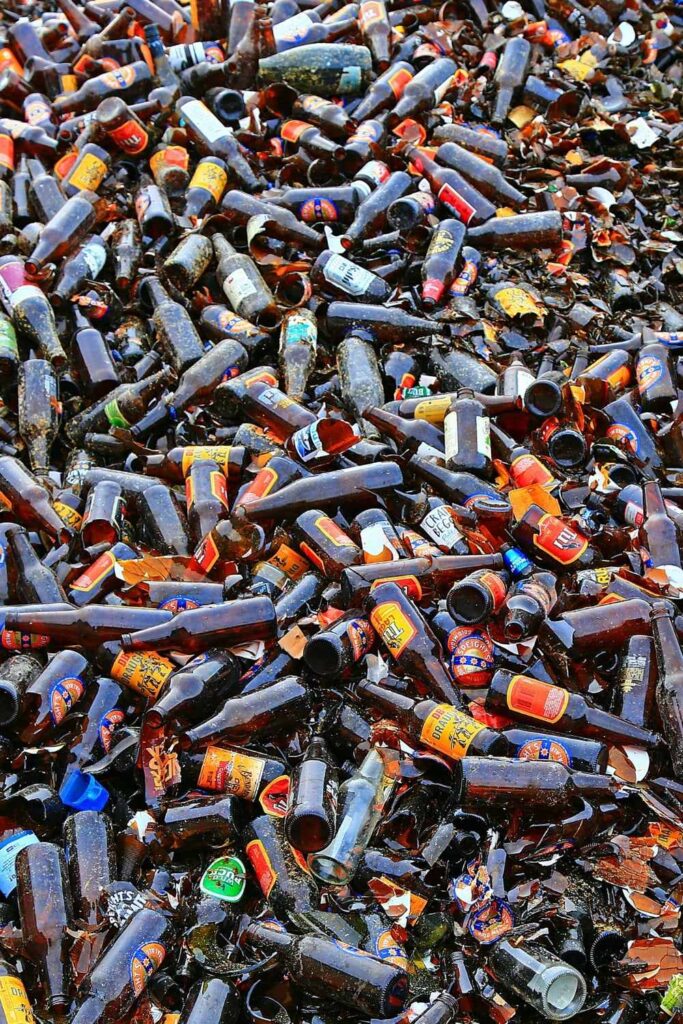
Next time you’re debating glass vs plastic water bottles or glass vs plastic sunglasses, here’s your answer: used and/or recycled.
Unless it has to do with consumables, in which case glass is the far safer bet. If you’re eating or drinking out of it, glass doesn’t pose even close to the human health hazards as plastic.
When it comes to sustainability, however, neither glass nor plastic really pulls ahead of the other. New materials have a heavy impact on our planet, regardless of what they’re made of.
The best thing we can do is curb our consumption of both.
When it comes to recycling glass vs plastic, the main takeaway is that we need to do better with both. Much better. Reusing both materials yourself (rather than relying on the blue bin on your curb) is the best way to ensure they actually see a second (or third or fourth) life.
While glass and plastic are far from perfect, you can make an even better planetary decision with aluminum, which assumes most of the pros from both glass and plastic.
While aluminum has environmental problems of its own (deoxygenation in oceans and acid rain), it’s light, isn’t made with fossil fuels, is infinitely recyclable, and requires less energy and resources to produce.
FINAL THOUGHTS ON GLASS VS PLASTIC
Much like rayon vs cotton, the glass vs plastic bottles environment debate has no clear winner.
However, glass has generally been the ‘chosen one’ for some time, especially when thinking about glass vs plastic containers. This is because, unless you’ve got chronic butterfingers, glass is a healthier choice.
To choose the best material, instead remember the 5 Rs of zero waste—refuse, reduce, reuse, repurpose, and recycle.
If you know anyone else who’s been stumped by this puzzling packaging debate, feel free to repurpose this article by sharing it with them.
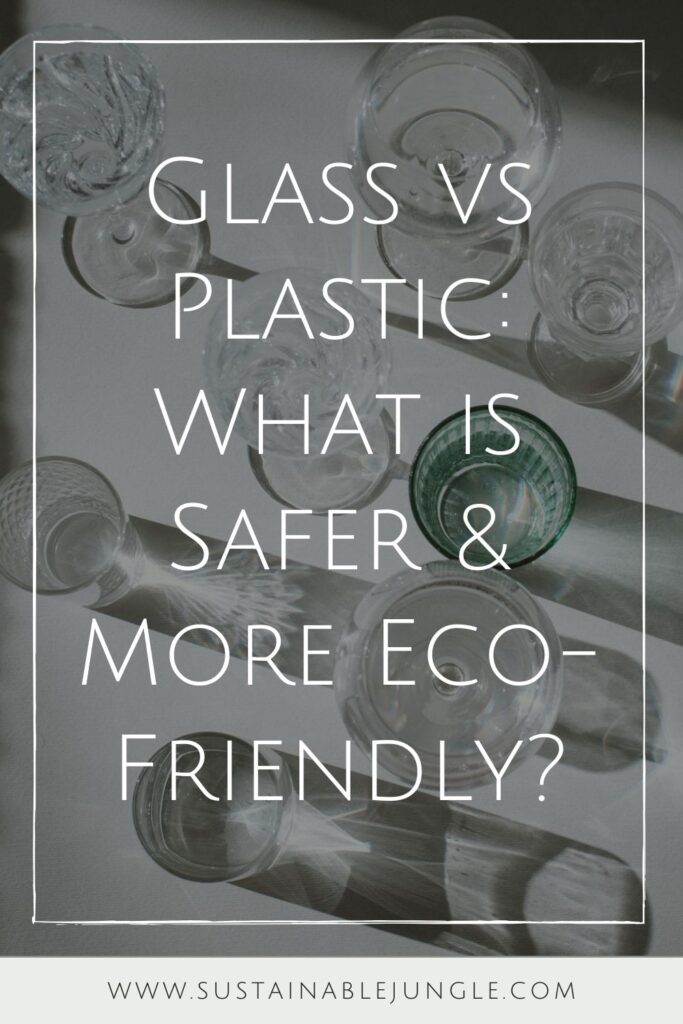

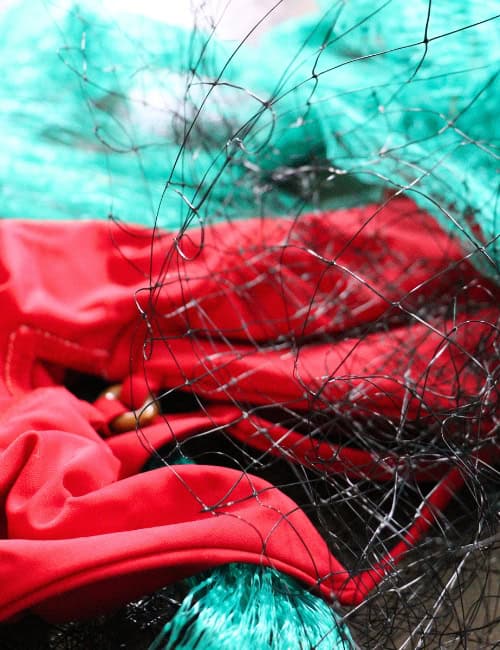


Target stores recycle glass and plastic. Please rinse them out.